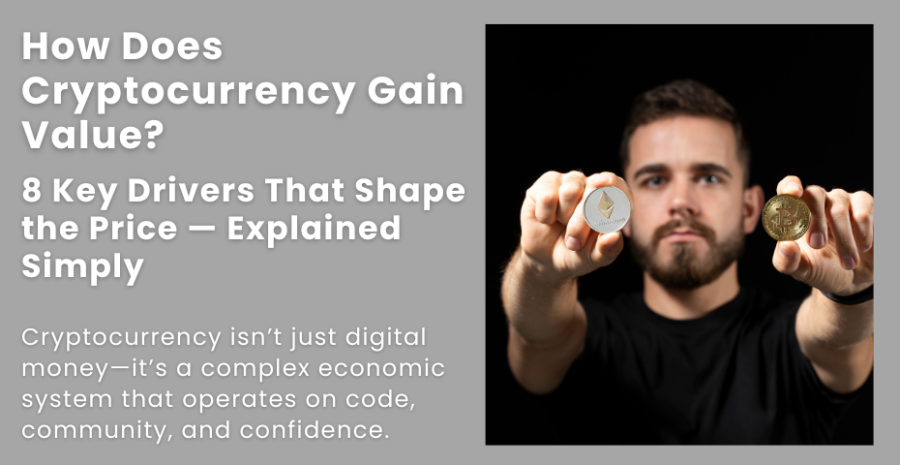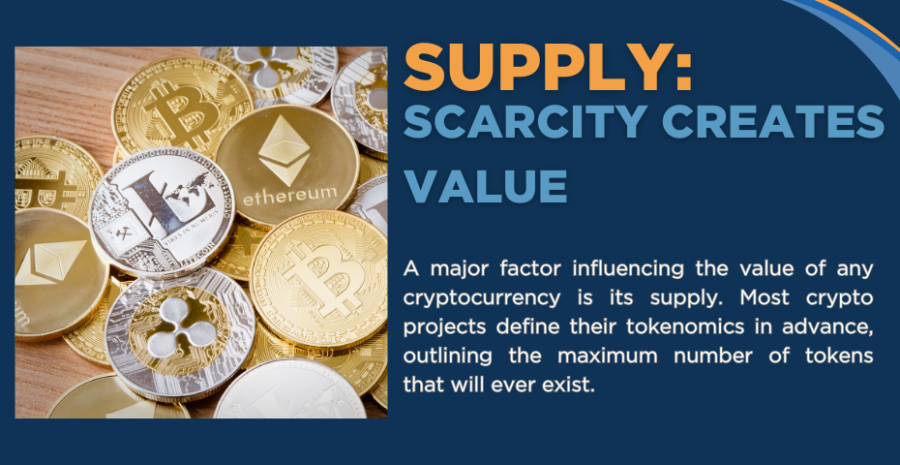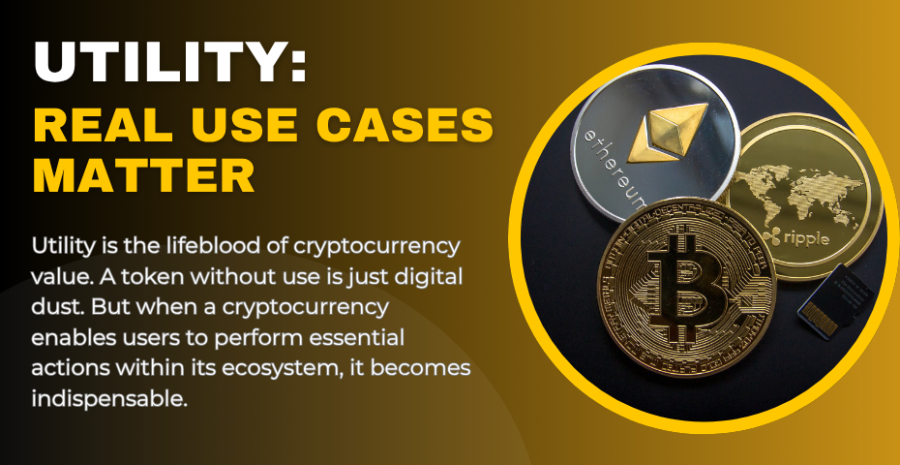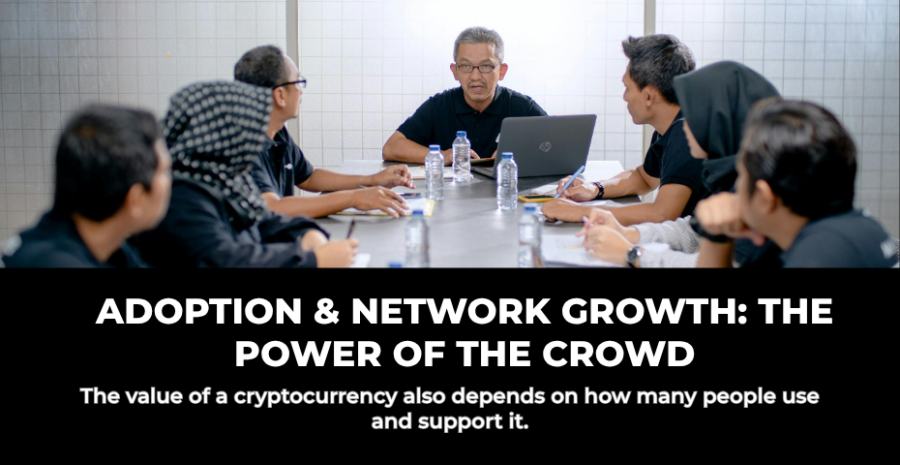
How Does Cryptocurrency Gain Value? 8 Key Drivers That Shape the Price - Explained Simply

Cryptocurrency isn’t just digital money—it’s a complex economic system that operates on code, community, and confidence. At first glance, it may seem like prices rise and fall randomly. But behind every surge or crash, there are key factors driving the value of each coin or token.
Just like traditional stocks or commodities, cryptocurrencies gain value when demand outpaces supply. But unlike fiat currency or gold, crypto relies heavily on utility, adoption, innovation, and decentralized principles. When you see Bitcoin hitting new highs or altcoins exploding in value overnight, it’s not just hype—there are often real fundamentals at play.
Understanding what gives cryptocurrency its value is crucial for anyone interested in this evolving market. Whether you’re a seasoned investor, a beginner trader, or a curious entrepreneur, knowing the “why” behind the price tags helps you make informed decisions.
It also allows you to recognize real opportunities instead of falling for the next pump-and-dump scheme. More importantly, grasping these value drivers helps you distinguish coins with long-term potential from those that are purely speculative.
At its core, crypto is governed by basic economics: supply versus demand. Supply is generally fixed or algorithmically controlled, and demand can rise or fall based on use cases, investor sentiment, technological innovation, security, community growth, and more.
Projects with strong fundamentals often attract sustained attention, while those lacking real-world applications tend to fade out. Value also increases when tokens are necessary to access a particular platform or service—this is where utility plays a vital role.
Let’s not forget the broader context. As trust in traditional financial systems continues to erode and more people seek alternatives to centralized banks, cryptocurrencies represent freedom, transparency, and opportunity. But not all cryptocurrencies are created equal.
While some are simply clones or hype-fueled trends, others offer powerful, ecosystem-based solutions with real demand. The trick is identifying what gives each crypto value—and acting accordingly.
In this blog, we’ll break down the 8 core factors that determine how a cryptocurrency gains value. From fixed supply to innovative use cases, these drivers are the real forces behind price movements in the crypto world.
And we’ll finish with a powerful example - Markethive - a blockchain ecosystem that’s built specifically for entrepreneurs and shows exactly how utility and vision can drive long-term value.

A major factor influencing the value of any cryptocurrency is its supply. Most crypto projects define their tokenomics in advance, outlining the maximum number of tokens that will ever exist.
This built-in scarcity mimics the concept of precious metals like gold. When people know there’s a limited quantity of something, it creates a sense of exclusivity and long-term worth.
Bitcoin, for instance, has a fixed supply of 21 million coins. As more people buy and hold it, the circulating supply shrinks, pushing prices upward.
A low or fixed supply model, combined with rising demand, results in a higher price per unit—especially if the crypto gains mainstream attention or institutional support.
On the flip side, if a cryptocurrency has an unlimited or inflationary supply, it must balance that with strong utility or burn mechanisms to maintain value. Investors often study a project’s whitepaper to understand the supply cap, token release schedule, and distribution.
Coins with large pre-mines or uneven allocations can suffer from low trust.
In the end, scarcity alone isn’t enough—but it creates the groundwork for value when paired with demand.

While supply sets the potential, demand sets the price. A coin may be scarce, but without demand, its value remains stagnant.
Demand can come from various sources—traders, long-term investors, developers, and users who need the token to access specific services.
For example, Ethereum’s demand surged due to its usefulness in deploying decentralized applications and NFTs.
If users need a token to interact with smart contracts, pay for services, or access exclusive features, that token gains real-world relevance.
Market sentiment also plays a key role in demand. Positive news, major partnerships, influencer endorsements, and platform upgrades often cause price spikes.
In contrast, security breaches or regulatory crackdowns can crash demand overnight. Understanding what fuels interest in a coin—whether it’s innovation, community growth, or hype - can help you evaluate its price potential.
Ultimately, it’s demand that breathes life into a coin and keeps its value growing sustainably over time.

Utility is the lifeblood of cryptocurrency value. A token without use is just digital dust. But when a cryptocurrency enables users to perform essential actions within its ecosystem, it becomes indispensable.
Take Ethereum, for example—ETH is required to pay gas fees on the Ethereum network, which hosts thousands of decentralized applications.
That gives ETH utility and ensures continual demand. The more useful the platform, the more its token is needed.
This is also why emerging projects with real-world applications - like identity verification, supply chain management, or peer-to-peer lending - can rapidly grow in value.
Tokens that unlock services, offer governance rights, or function as in-game currencies add real economic relevance.
Projects that continuously expand their ecosystem and build partnerships tend to have stronger utility, which in turn fuels demand and raises their market value.
When evaluating a coin, always ask: “What can this token do that makes people need it?”

Cryptocurrency value is often tied to the technology behind the project. Breakthrough innovations attract attention, developers, and investment.
Bitcoin introduced decentralized digital money. Ethereum brought smart contracts.
Newer platforms like Solana, Cardano, and Avalanche compete on speed, scalability, and interoperability.
Technological edge creates competitive advantage - and the better the tech, the more likely a project can handle real-world usage and expansion.
Security, too, is a factor—projects that implement top-tier cryptography and auditing procedures gain investor trust.
Continuous development and open-source collaboration are positive indicators of longevity.
On the other hand, outdated tech, scalability problems, or forks can drive prices down.
Investors often watch GitHub activity, roadmap progress, and developer engagement to assess the health of a project.
In crypto, staying still is falling behind—innovation fuels growth and, by extension, value.

The value of a cryptocurrency also depends on how many people use and support it. Widespread adoption creates a network effect: the more users, developers, merchants, and institutions involved, the more valuable the token becomes.
For instance, when businesses start accepting a crypto for payment, or when governments integrate it into financial systems, its credibility and utility skyrocket.
This is why community strength matters. A passionate, engaged, and growing community can provide feedback, spread awareness, and build additional services around a token.
Look at Dogecoin - it started as a meme, but its strong community helped push it into mainstream visibility. Real-world use cases, merchant partnerships, and ease of access (like listings on major exchanges) also drive adoption.
Adoption is the bridge between concept and currency - it transforms a digital token into a useful, transactable asset with increasing value.

Crypto is heavily influenced by sentiment. News stories, social media trends, and influencer opinions can significantly sway public interest.
A single tweet or a YouTube video can trigger a buying frenzy or mass panic. This volatility may be seen as a weakness, but it also reflects the power of perception in shaping value.
Market sentiment is driven by both macro events—like government regulations, financial crises, or innovations—and micro events—like coin upgrades or hack news.
Even fear of missing out (FOMO) or fear, uncertainty, and doubt (FUD) can cause huge price swings. Projects with strong media narratives, transparent leadership, and active communication tend to maintain positive sentiment.
Understanding these emotional undercurrents helps investors better time their entries and exits.
In crypto, perception often becomes reality—at least in the short term.

Without trust, value cannot exist. If a cryptocurrency has suffered hacks, scams, or poor management, its reputation—and price—will likely suffer.
Security is foundational in blockchain ecosystems. Projects that prioritize secure coding, third-party audits, bug bounty programs, and transparent communication build investor confidence.
This trust translates directly into sustained value. Additionally, decentralization matters. Projects that reduce single points of failure and empower community governance tend to be more resilient.
If investors believe their funds are safe, and the project will not rug-pull or disappear overnight, they are more likely to buy and hold the token. In a landscape filled with uncertainty, secure and transparent projects shine.
When a coin earns the trust of the public, it becomes more than a speculative asset—it becomes a store of value.

Among the many blockchain projects striving to deliver utility, Markethive stands out as a complete, purpose-driven ecosystem built to serve entrepreneurs.
It combines the functionality of a decentralized social network, inbound marketing platform, content publishing suite, and crypto wallet—all in one.
Markethive’s native currency, Hivecoin, plays a central role in accessing and interacting with the ecosystem. From marketing tools to affiliate networks to staking rewards, Hivecoin is not just a token—it’s a utility asset that fuels real business activity.
Built entirely on blockchain technology, Markethive ensures transparency, decentralization, and security, making it ideal for creators, freelancers, and digital entrepreneurs.
The platform is designed to grow with its users, offering monetization pathways, community engagement, and automation—all backed by crypto infrastructure.
As more entrepreneurs join the ecosystem, demand for Hivecoin increases, organically raising its value.
Markethive exemplifies how a cryptocurrency gains value through utility, adoption, and a clear mission.
It's not just a coin - it's an ecosystem empowering a new generation of digital entrepreneurs.
The value of cryptocurrency isn’t just decided in the blink of a market tick—it’s built over time through layers of innovation, trust, use, and adoption. While volatility often steals the headlines, it’s the underlying fundamentals that determine whether a token will thrive or fade.
From supply limits and real-world utility to powerful ecosystems like Markethive, the path to value creation in crypto is multifaceted. By understanding these core drivers—scarcity, demand, utility, technology, adoption, sentiment, security, and ecosystem design—you’re better equipped to navigate the dynamic crypto landscape with confidence.
Investors and users alike must look beyond price charts and hype cycles. The most valuable cryptocurrencies aren’t just riding a wave—they’re building infrastructure, solving problems, and empowering users with new possibilities.
Each successful coin or token reflects a larger vision: a decentralized, transparent, and inclusive financial future. When you identify crypto projects with solid foundations and meaningful use cases, you can position yourself ahead of the curve, not just chasing the next trend but backing the next breakthrough.
As crypto continues to evolve, those who understand the mechanisms behind value creation will be the ones who benefit most—financially, professionally, and ideologically.
So whether you're holding Bitcoin, experimenting with altcoins, or diving into the Markethive ecosystem, remember that true value goes beyond numbers. It lives in community, utility, vision, and execution.
Cryptocurrency is more than digital money—it’s the building block of a decentralized revolution.
And now you know how that revolution gains value, one coin, one use case, and one innovation at a time.
Your time to thrive is now. One step at a time.
....................................................................................................................................................................................................
About: Andries vanTonder
Over 46 years selfemployed
He is a Serial Entrepreneur, an Enthusiastic supporter of Blockchain Technology and a Cryptocurrency Investor
Find me: Markethive Profile Page | My Twitter Account | My Instagram Acount | and my Facebook Profile.
